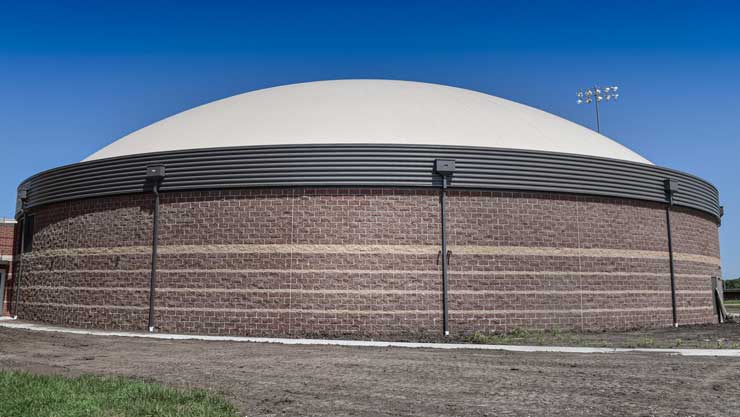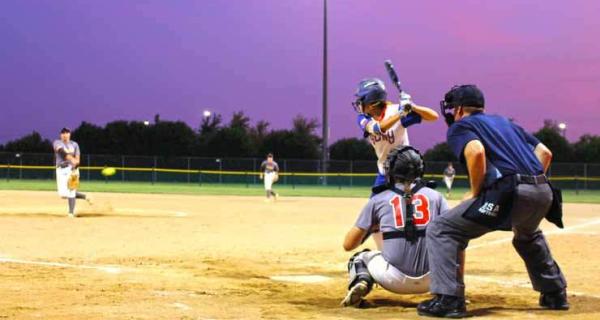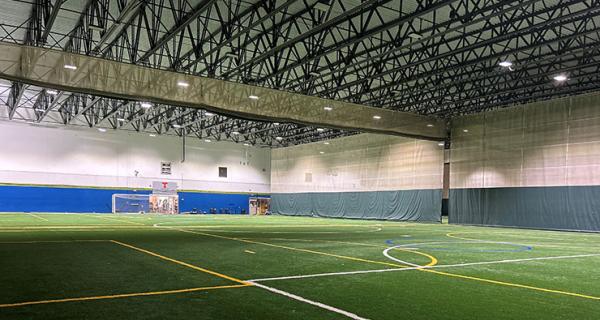Sports Domes Gain Popularity in Storm-Heavy Regions
In the wake of devastating storms, durable dome-shaped sports venues have been popping up around the country.

A joint venture called SportsDomeShelters has been working to plant its namesakes in natural disaster-prone regions, looking to enhance communities with its distinctive sports domes that double as storm shelters.
While each group involved in SportsDomeShelters has been in the space for more than a decade, the organization as it’s known now began in 2019. That’s when the leaders of Omni-Threat Structures, which specializes in building structures that can withstand any disaster, Domtec International, which constructs thin-shell domes, and Resin Architecture, a design firm, teamed up to provide a one-stop-shop for sports domes.
“This team we’ve built—an architect, a general contractor, and a dome builder—means we can all come together and do a turnkey package,” says Benjamin Davis, Domtec’s vice president for business development. “There is nobody else in the dome world that’s offering the same thing, from design to final construction.”
The group has built domes in Arizona, Missouri, Texas, Oklahoma, Alabama and Florida, and is pursuing potential opportunities in the Caribbean.
Dome Advantages
So what’s the big deal with sports domes? They come with plenty of advantages, the builders say.
Durability is a hallmark of the domes, which are built to withstand Category 5 hurricanes, EF-5 tornadoes, earthquakes, fires and “event-driven missiles,” a.k.a. debris hurtled through the air.
Since the domes meet FEMA safe room requirements, as well as international standards such as ICC 500, they can come with tremendous cost savings. FEMA has a grant program that will pay for 75% (and up to 90%) of the cost for shelters constructed by community-based organizations, such as a school district, a city, or even a church, according to Omni-Threat CEO Peter Fedele.
“Whenever you hear the president declare a national disaster, it offers local leaders money allocated from FEMA not only for mitigation, but for preventative situations,” Fedele says. That means the funding for storm shelters opens up. The grant approval process can take from six months up to a year, Fedele says, with the total time to completion of the project taking up to two years.
Construction Process
Actual construction of the domes, however, is faster. “We build buildings backwards,” explains Mike Hunter, president of Domtec. “The first thing we put up is the roof.”
Once the waterproof inflatable air form roof is in place, the rest of the construction site is essentially sheltered from the elements, unlike traditional buildings. The rest of the dome goes up quickly, with the spraying of insulation foam and the addition of reinforced steel and spray concrete. Construction usually takes about three months, Hunter says.
The domes are free-span, which makes them ideal for sports facilities. “Architects have complete freedom with design concepts,” Hunter says. “They don’t have to worry about columns blocking views, and they can put walls wherever they want.”
The sports domes typically range in size from about 150-foot diameters (typical for high school gyms, Hunter says), to about 300-foot diameters. They’re considered “thin shell” domes, meaning the area of the actual structure is fairly thin compared to the span of the dome.
“Other types of structures can go bigger, but they won’t be nearly as energy efficient,” Hunter says.
Built to Last
Energy efficiency is another huge perk to the sports domes. Hunter says the domes can slash energy costs in half compared to a traditional building, thanks to their insulation and the thermal mass of the interior concrete.
They’re also more sustainable than traditional buildings, Hunter says.
“It’s a lot more sustainable to build designs that will last—through hurricanes, tornadoes, earthquakes, fires—than to build things economically, thinking you’re saving money,” Hunter says. “People might say, ‘Oh, but grass huts: Those are made of grass, that’s really sustainable!’ But they burn and blow away really easily, and they don’t keep you warm in blizzards.”
One final perk of the domes? They tend to become a landmark in the community, according to Davis.
“People will use it to give directions: ‘You know, if you turn left after the dome…’ or ‘It’s just one block after the dome,’” Davis says. “It becomes something for the community to be proud of.”








